

Cubitt was a British motor vehicle manufactured in Aylesbury, Buckinghamshire from 1920 to 1925. Around 3,000 vehicles were built.


Cubitt was a British motor vehicle manufactured in Aylesbury, Buckinghamshire from 1920 to 1925. Around 3,000 vehicles were built.
The Cubitts Engineering Co. Ltd. was originally a construction company which built much of Central London - Covent Garden Market, the Cenotaph and the 'new' east wing of Buckingham Palace. It had been founded by Thomas Cubitt around 1815, in association with his brothers William and Lewis. In 1883 the business was acquired by Holland & Hannen, a leading competitor, and became known as Holland & Hannen and Cubitts and subsequently as Holland, Hannen & Cubitts. [1]
In 1920 they began manufacturing motor vehicles at the Great Southern Works on the Bicester Road in Aylesbury under the name Cubitt, completing circa 3,000 motor vehicles between 1920 and 1925. Cubitt employed mass production techniques to compete with the flood of American imports, and they openly stated that it was an American type car, simple and rugged. Manufacturing difficulties, primarily with component suppliers, prevented both the 5,000 per year target and the low target price. [2]
In 1922 S.F. Edge (director of Napier cars; director of British Anzani; and managing director of AC Cars) bought the company and also became managing director. He employed J.S. Napier (of Arrol-Johnston not of Napier Cars) as both director and designer, who went on to introduce the reduced weight side-valve version of the engine for the K4 and L4 models. [3] [2]
In January 1925 (or 1924 [2] ) Edge decided that AC Cars would manufacture their own version of the Anzani engine at the Aylesbury works and thus cancelled the order for 30 engines a month from Anzani - this engine production probably only continued until c.1927. [2] [4]
In February 1925 a receiver was appointed, Cubitt was declared bankrupt and third party investors, such as James Putman of Farringdon, lost a lot of money. [5] [2] [6]
After the demise of Cubitt motor manufacturing in 1925 and the A.C. Cars engine manufacture circa 1927, the Great Southern Works was involved in other piecemeal projects including making shop-fittings until it was demolished and redeveloped for domestic housing in the 21st century. The marque is commemorated by 'Cubitt Street' (and Edge Street) which traverse the old works.

The 16/20 used 2.8 litre, 4 cylinder engines with coil ignition, plus a four speed gearbox with a central gear lever. Unusually the final drive was by a worm gear arrangement. It was a family car that could achieve 50 mph for £442, and was considered good value by contemporary motoring magazines. The body cost £20 to build and the car was described as high and heavy, although it was also possible to have a body fitted by a different company. The slogans were Big value for little money and The right car at the right price. [2] [7]
In 1925 the K4 and L4 models were introduced featuring a new engine of the same capacity, but lightened and simplified by conversion to side valves instead of overhead valves, use of aluminium pistons and lighter connecting rods. The side-valve engine may have been for streamlined production, cost, reliability or weight-saving reasons. The cantilever rear springs were replaced with semi-elliptic springs and the rear axle was fitted with an underslung worm drive. The K4 used a 3 metre wheelbase and the L4 was approximately a foot longer. [2] [7] [6] [8]
| Model | Available | Cylinders | Capacity | Wheelbase |
|---|---|---|---|---|
| 16/20 hp | 1923–1925 | 4 In line, Overhead valves | 2815 cm³ | 3048–3200 mm |
| K4 | 1925 | 4 In line, side valves | 2815 cm³ | 3073 mm |
| L4 | 1925 | 4 In line, side valves | 2815 cm³ | 3226 mm |
The Aeroford was an English automobile that was manufactured in Bayswater, London from 1920 to 1925. The Aeroford was an attempt to make the Ford Model T more attractive by disguising its appearance with a unique bonnet and radiator grille.
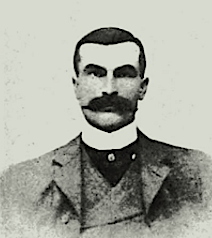
Selwyn Francis Edge (1868–1940) was a British businessman, racing driver, cyclist and record-breaker. He is principally associated with selling and racing De Dion-Bouton, Gladiator; Clemént-Panhard, Napier and AC cars.
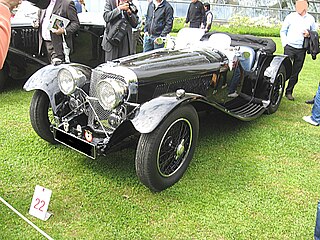
The SS 90 was a British sports car first built by SS Cars in Coventry, England in 1935. In 1945, the company changed its name to Jaguar.
The Marlborough was a make of car sold on the British market between 1906 and 1926. For most of its life the cars were made by Malicet et Blin in France, but after World War I they were partially assembled (finished) in London and an increasing number of British parts used.
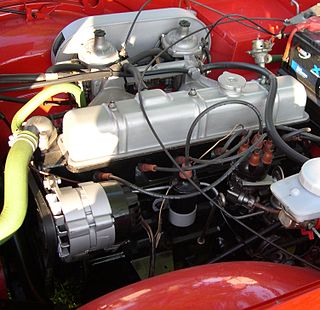
The Triumph Six Cylinder or Triumph I6 engine is a cast-iron overhead valve straight-six engine produced by Standard Triumph. It is an evolution of the Standard Motor Company's inline-4 Standard Eight, with the addition of two cylinders and a larger displacement.

Weigel Motors Ltd was a British automobile manufacturer from 1907–1910 at Coswell Road in London. The company built the first British cars to participate in Grand Prix Racing when it entered 2 cars in the 1907 French Grand Prix at Dieppe, driven by Gregor Laxen and Pryce Harrison. These were powered by Straight Eight engines displacing 14,866cc, formed by coupling two 40 hp engines in tandem. Financial difficulties emerged in 1907, as the company was reformed, and moved to a new factory in Olaf Street, Latimer Road, Notting Hill. For the 1908 French Grand Prix Weigel entered three four-cylinder cars, with engines displacing 12,781cc driven by Harrison, Laxen and Shannon. Again, none of the cars finished. The firm's assets were acquired in 1910 by Crowdy Limited, who continued manufacture of cars in the Olaf Street works, at first merely continuing the existing 25 hp and 40 hp Weigel designs and later producing a 19 hp four and a 29 hp six with dashboard radiators similar to those on Renault cars of the era. At the end of 1911 they moved to West Heath Works, Northfield, Birmingham producing cars with normally-located radiators, before going out of business.
Pickering, Darby and Allday Ltd, PDA, was a British automobile manufacturer from 1912 to 1913. They built the PDA Cyclecar at their works in Birmingham, equipped with V2-engines from various manufacturers. Approximately 15 units were built.

Pearson & Cox was a British automobile manufacturer from Shortlands, then in Kent. They traded from 1908 to 1916, and in 1913.), they were producing both steam-powered vehicles and petrol-powered cyclecars.
Cumbria Motors was a British cyclecar manufacturer based in Cockermouth (Cumberland) in 1914.
Dayton, Dayton Dandy, was a British automobile manufactured in 1922 by the Charles Day Manufacturing Co. Ltd. in the London Borough of Hackney W10. The Dandy was a Cyclecar with a single cylinder Blackburne engine producing 4 hp.
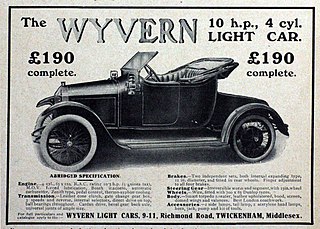
Wyvern Light Car Co.Ltd. was a British automobile manufacturer which traded from 1913–1914 in Twickenham, then in Middlesex. The cyclecar was powered by a four-cylinder, in-line, 10.53 hp. Chapuis-Dornier engine driving the rear wheels.
WSC, Wholesale Supply Co. Ltd. was a Scottish automobile manufacturer, established in 1914 in Aberdeen. The cyclecar was marketed under the name of WSC with a V twin J.A.P. engine rated for taxation at 8 hp.
James Robertson was a British automobile manufacturer from 1915 to 1916 in Manchester. The Robertson Cyclecar had a V-2, twin-cylinder JAP engine rated at 8 bhp (6.0 kW).

Gordon, Gordon Armstrong, was a British cyclecar produced in Beverley Yorkshire by 'East-Riding Engineering' from 1912 to 1916. Production was halted by World War I.
Gordon, Gordon Cycle & Motor Company Ltd was a British manufacturer of bicycles and motor cars in 1903 and 1904. It was established on the Seven Sisters Road, north London.
Eric Longden was a British cyclecar brand manufactured from 1920 to 1927, originally by the Australian racing driver Eric Longden, and from 1922 by the Air Navigation and Engineering Company from Addlestone (Surrey). ANEC also built the Blériot-Whippet.

Iris was a British car brand that was manufactured from 1906 to 1925 by Legros & Knowles Ltd in Willesden, London and Aylesbury, Buckinghamshire.
Willis was a British automobile marque that began and ended in 1913. It was manufactured by Finchley Place Garage in London.

The Alvis Firefly is a car manufactured by Alvis from 1932 until 1934. It followed on from the 12/50 TJ model.
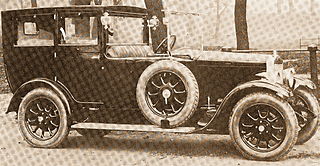
Windsor was a British automobile brand, designed and manufactured by James Bartle & Co. Ltd, in Notting Hill (London) between 1924–1927.